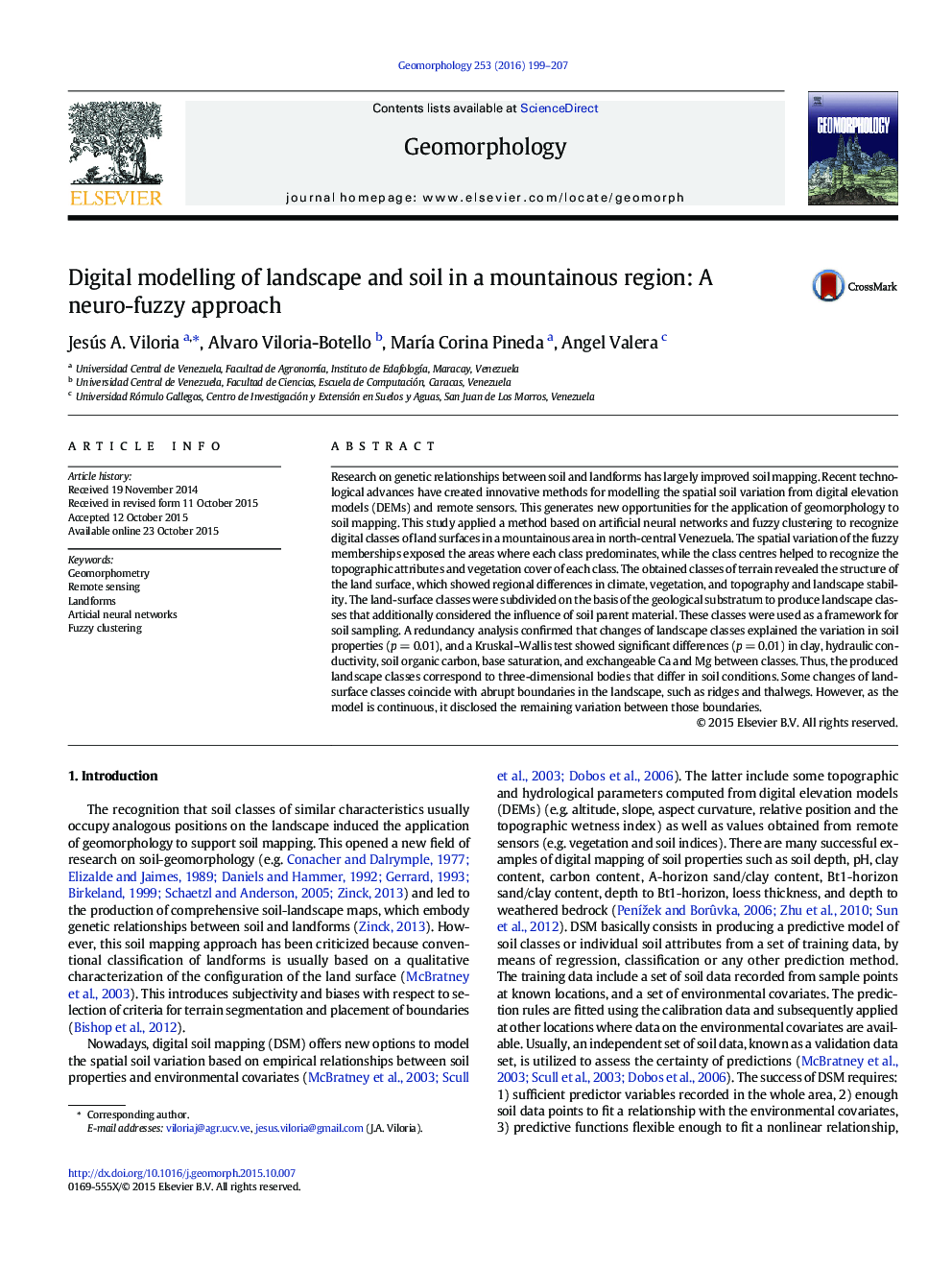| Article ID | Journal | Published Year | Pages | File Type |
|---|---|---|---|---|
| 6431696 | Geomorphology | 2016 | 9 Pages |
Research on genetic relationships between soil and landforms has largely improved soil mapping. Recent technological advances have created innovative methods for modelling the spatial soil variation from digital elevation models (DEMs) and remote sensors. This generates new opportunities for the application of geomorphology to soil mapping. This study applied a method based on artificial neural networks and fuzzy clustering to recognize digital classes of land surfaces in a mountainous area in north-central Venezuela. The spatial variation of the fuzzy memberships exposed the areas where each class predominates, while the class centres helped to recognize the topographic attributes and vegetation cover of each class. The obtained classes of terrain revealed the structure of the land surface, which showed regional differences in climate, vegetation, and topography and landscape stability. The land-surface classes were subdivided on the basis of the geological substratum to produce landscape classes that additionally considered the influence of soil parent material. These classes were used as a framework for soil sampling. A redundancy analysis confirmed that changes of landscape classes explained the variation in soil properties (p = 0.01), and a Kruskal-Wallis test showed significant differences (p = 0.01) in clay, hydraulic conductivity, soil organic carbon, base saturation, and exchangeable Ca and Mg between classes. Thus, the produced landscape classes correspond to three-dimensional bodies that differ in soil conditions. Some changes of land-surface classes coincide with abrupt boundaries in the landscape, such as ridges and thalwegs. However, as the model is continuous, it disclosed the remaining variation between those boundaries.
